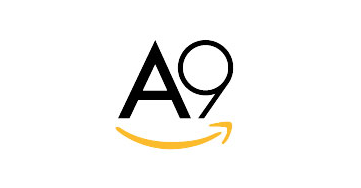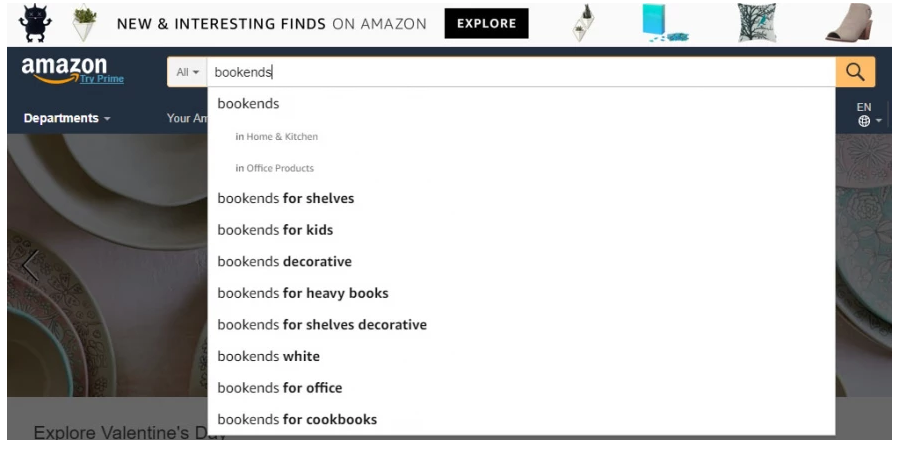The correct implementation of keyword research is the most important aspect of increasing your Amazon business listing traffic.
There are many ways to attract targeted traffic to your business information, including off-site promotions and internally sponsored product ad campaigns, but the best way to get the first bestseller is to place strategically on your business information Relevant research keywords in to take advantage of organic traffic.
Table of Content
- Introduction to Amazon SEO strategy
- The cycle of optimization, analysis, and repetition
- Understanding Amazon’s A9 search algorithm
- Amazon SEO keyword research Strategy
- Amazon Title Optimization SEO Strategy
- Amazon search term optimization
- Amazon product function optimization
- Amazon product description optimization
- Amazon SEO Strategy summary
Introduction to Amazon SEO strategy
Many people ask this question, what is Amazon SEO, maybe they don’t understand that SEO is not just Google.
High rankings in Amazon search are critical to many e-commerce companies, and there are many different techniques that can be effectively applied to successful strategies.
To execute an effective Amazon SEO strategy, you need to implement some key principles. Knowing what makes a good SEO strategy is crucial, and start with keyword research.
You must know which Amazon customers are searching for and use relevant terms in your product listings to be one step ahead.
The key here is related.
If a customer clicks to leave before buying, it doesn’t matter how high the search volume is.
Once you have relevant keywords, your goal is to strategically place them at the back end of product titles, features, descriptions, and search terms.
The cycle of optimization, analysis, and repetition
Note: Just because you optimized the list once, it does not mean that the work has been completed. Optimization is a continuous process that requires an entire cycle of optimization, analysis, and repetition.
To be successful, you will need to pay attention to which keywords have successfully converted sales and promoted those on the list.
You can always add more keywords to the list, or edit the list to make it more relevant to specific keywords.
Usually, you will find some related search terms, but you won’t be able to convert customers.
In these cases, you may need to update the list to reflect the feature or to benefit more clearly.
In other cases, you may find that unexpected keywords tend to convert highly, and you may choose to focus on these new conversion keywords.
Either way, the goal is to figure out what works and continue to push your list in the right direction.
“Optimizing the customer conversion rate first, and including important keywords at the same time will help A9. Brands should realize that Amazon product listings will appear in the most paid and natural search positions in Google search (sometimes above the brand’s own website). So how do you optimize the title and bullets play a key role in the products that non-Amazon customers see.”
Understanding Amazon’s A9 search algorithm
A9 is Amazon’s proprietary search algorithm software, designed to help Amazon customers find the best products at the best prices, enabling them to make more purchases, thereby increasing Amazon’s revenue.
Regarding A9, the most important thing to remember is that Amazon will reward converted products, not products with the most intensive keyword use.

There are many factors that determine the ranking of products in the algorithm, including the quality and quantity of product reviews, execution methods, and prices, but in the end, everything depends on conversion.
The more times a product is converted to a specific keyword, the higher the product’s ranking on Amazon for that search term.
Amazon usually rewards products with an “Amazon Choice” badge for certain search terms, even if it is not a bestseller in the parent category.
Amazon SEO keyword research Strategy
As stated in the strategy, the most important aspect of Amazon SEO starts with proper search engine optimization keyword research.
Below, I have listed some of the most popular resources, from free to paid, that allow sellers to view the potential search volume for any given term.
Since no tool is absolutely accurate, it’s still helpful to see which search term is higher compared to other search terms and make a decision based on that The search volume between different tools can also vary greatly, especially when they target different platforms (such as Google, Amazon, etc.).
SEO keyword research using SEMrush
To start a search engine optimization keyword research for Amazon, you first need to write down all the keywords and search terms that customers can think of to find products. From there, you will enter them into SEMrush in the keyword overview search bar.
This will provide a list of related terms, which you can easily download into a CSV file. Repeat this process until you have entered all initial search terms.

Now, start copying the most relevant search terms into a new spreadsheet, including keywords, search volume, and cost-per-click (this can help you determine your advertising budget after you start advertising).
You may also find other terms that you haven’t considered, and then enter these variations or combinations of search terms to find other search terms and their numbers.
Once you have the list, you will need to consider using some of the other keyword research resources mentioned below, and then finalize the list and choose the most appropriate term as the target in the list.

Keyword research using Amazon autofill
One of the easiest ways to get other suggestions is to go to Amazon.com (make sure to log out of your account first and clear the cache to avoid any suggestions based on previous search history) and enter the initial search term in the search bar.
Amazon will begin to automatically fill in suggestions, which you can use to determine which Amazon customers may be searching and how they are wording those searches.

Use Google Keyword Planner for keyword research
If you have a Google AdWords account, you can also use the Google Keyword Planner, which can provide suggestions based on the initial search terms and the estimated search volume for those terms on Google.
Please note that even if Amazon surpasses Google to become the main search engine for product shopping,
Amazon product information is still ranked on Google, and sellers can improve product rankings by optimizing for Amazon A9 and Google search engines.

Keyword research of the scope of use
The scope is a new Amazon SEO research tool provided by Seller Labs, which allows sellers to search for relevant search terms based on initial search phrases and search terms in the competitor list.
They include a free Google Chrome extension to start, but you need to upgrade to a paid plan to fully use the tool.
One of the biggest benefits of using Scope is that because the data comes from search term impressions, you will get a more accurate Amazon search volume, and the number of impressions may be higher than Google.

Keyword research using Amazon automated marketing campaigns
If you already have your product listed on Amazon and are running an automated campaign, you can use the automated campaign keywords report (which uses broad matching) to capture other potential search terms that your products have converted.
This can be done by going to the report-advertising report-search terms report and requesting a report that you can download for analysis.
Once you have all possible keyword terms, you can add them to the spreadsheet, sort them by relevance and quantity, and make a plan to implement them in the product list.
Amazon Title Optimization SEO Strategy
You can insert keywords in several places, but no keyword is as important as the product title.
The title is actually your first and most valuable search field.
The goal here is to take advantage of SEO and avoid keyword stuffing while being consistent with Amazon’s strategies and best practices.
The length of Amazon titles will vary, but the goal is usually to be concise, and category-based titles will be limited to between 50 and 100 characters.
The optimized title will also include the brand name, product name, main features, and change information (size, color, flavor, etc.).
Please note that in short, a few dominant keywords are better than many keywords.
Normally, the first 2-3 search terms will lead to organic sales of most products, so it’s important to focus on the most relevant search terms here.

You also want to make sure to follow the Amazon Style Guide, which is an online guide that provides detailed information on how to format the title based on the product category. Generally, the title will follow the following general format/layout:
[Brand] + [Function] + [Material] + [Key Ingredients] + [Product Type] + [Model] + [Size] + [Package Quantity] + [Color] + [Spices]
You will want to include at least 1 or 2 search terms in the title, and sometimes they overlap so that you can put them succinctly in the allotted space while still following Amazon’s style guidelines.
Amazon search term optimization
This is definitely an indispensable part of Amazon optimization and cannot be ignored.
Amazon currently allows 250 characters to be indexed in the “search terms” field.
Your goal is to use 250 characters as close as possible (including spaces) to increase the number of search terms that can be used to find products.
To do this, you will want to populate the search terms with all relevant and tangential search terms that were not used in the title in the research.
Don’t repeat keywords, use stemming (-ing, -ed, -es, etc.), commas or punctuation.
I like to keep all search terms in lowercase because it looks cleaner and allows me to easily find words that may have been used twice.
Cool, unique, heavy, cute, creative shelf, organize table, fancy
It is important to take some time to do this job well because your potential search volume depends largely on it.
If your product does not contain keywords, you are unlikely to find it. Adding other relevant terms will help expand your potential audience.
Surprisingly, only one of the more than 50 professional Amazon sellers I work with can complete their search criteria correctly.
Therefore, if you take the time to optimize Amazon search terms, then this may give you a competitive advantage over other listings.
Amazon product function optimization
In addition to your backend Amazon search terms, you will also want to add the first 2-3 search terms to the product features.
Similarly, you don’t need to add keyword content, but consider adding at most one keyword term per product feature (if applicable). A9 will index product features.
If customers can quickly confirm that they have found the products they need, including these features here can not only increase potential rankings but also increase conversion rates.
Use these decorative bookends to easily organize all your books.
| Use these decorative bookends to easily organize all your books |
| Use these decorative bookends to easily organize all your books |
Amazon product description optimization
You can add the main search term at the end of the product description.
Amazon currently provides two product description options for sellers with brand registration: regular product description and enhanced brand content.
A9 does not currently index enhanced brand content, so even if you use this feature as an overlay, you will still want to include optimized general product descriptions for A9.
However, Google will index enhanced brand content, so you also want to include the main keywords in that content.
Amazon SEO Strategy summary
In addition to using search terms in product listings, you can also include all relevant search terms in Amazon manual campaigns to attract more traffic to the listings.
Optimizing the list for the first time can usually make you 85% of the benefits, but it requires continuous analysis and optimization to maintain the momentum.
After optimizing, you will need to attract internal and external traffic to the list immediately to create conversions and start allowing A9 to rank your products accordingly.



